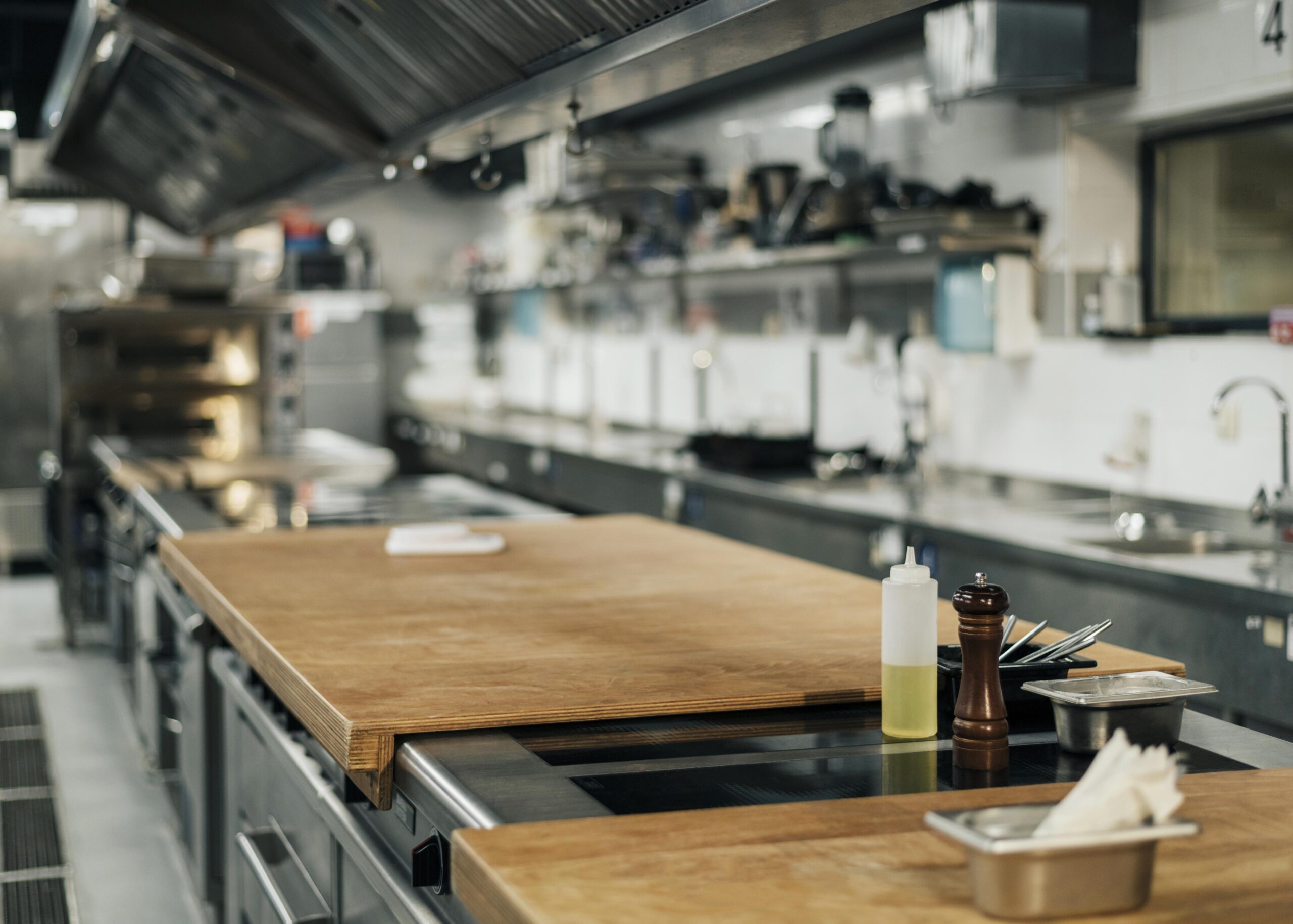A commercial kitchen that is well maintained with regard to cleanliness and safety protocols while preparing the food ensures your customers and employees are always safe. Many people including pregnant women or elderly are at the risk of getting sick with foodborne illnesses. Research has found that about 1 in 6 people get sick from foodborne diseases each day. And the number of deaths are 3,000 while those hospitalised are 128,000. Let us check out the safety protocols necessary to run a commercial kitchen successfully.
The first and foremost protocol required for maintaining a commercial kitchen are following the rules of cleanliness and safety. In case the area is accidentally contaminated with Salmonella or other bacteria, your customers can fall sick. You must learn how to perform the checks done by the local health department, in which case your restaurant can operate with full certification.
Although it can sometimes be very difficult to maintain all the safety protocols of a commercial kitchen, it is the duty of every staff member to ensure the safety rules are followed for the smooth running of the commercial kitchen. Let us now list a few necessary health and safety standards to be met at every commercial kitchen so as to keep your customers safe and coming back to you on a regular basis.
# Promote hand washing
The most important food safety tip is hand washing. This means you provide a dedicated hand washing station for your employees and ensure that they wash on a regular basis to avoid any contamination . Your employees should have clean hands before touching any food, whether it be meat or vegetables since the smallest amount of bacteria can make someone sick if it’s on a piece of food, so hand washing is a key point to keep safe and healthy. Make sure all of your staff follow the method of washing their hands for at least 20 seconds under running water after soaping up well.
# Sick Workers not to Prepare Food
The CDC’s Environmental and Health Sciences branch conducted a survey of 486 food workers in nine states. The results showed that 5% of workers said they prepared food when they were suffering from vomiting or diarrhea. By doing so, they put their customers’ health at risk. You shouldn’t need food safety tips to tell you if your employees are sick, keep them away from the food.
# Using Gloves
It has to be mandatory that your staff at the commercial kitchen wear kitchen gloves while preparing food, but as they can’t use the same gloves for every ingredient they need to change their gloves regularly when moving from raw meat and poultry to cooked food. In case they don’t change their gloves, they can spread contaminants to the customer’s food, which may lead to food poisoning. Have boxes of gloves have to be stacked at an easily available place so your workers can change them efficiently and properly.
# Wash food properly
It is the duty of the kitchen staff to wash fruits and vegetables properly before cooking or preparing any dish. Although vegetables are peeled or skinned, they have to be washed in running water to keep them clear of any bacteria or other microorganisms. Thus using a colander will make the task easier, if it is only used for fruits and vegetables, and not any other ingredients, such as pasta or raw meats. Always remember that tomatoes require special care, as 12 cases of Salmonella have been linked to tomatoes in recent years and hence never leave your tomatoes soaked in standing water, but instead, wash them under running cold water to scrub thoroughly. Fruits and vegetables should be washed under cold running water or with a commercial FDA-approved fruit and vegetable rinse. Check with your local health department to determine which options you may use in your commercial kitchen.
# Cook The Food to the right temperatures
Before cooking food your staff should know the optimum temperature which that particular food needs to be cooked. The guidelines for each and every food has to be specified and must be followed by your staff, for example chicken, needs to be cooked to 165°F, while according to the FDA standards FDA restaurants should cook ground beef to a temperature of 155°F for 15 seconds as this method helps prevent E-coli, which is found in ground beef and accounts for many cases of foodborne illness. Also do remember that any type of meat being prepared and cooked in a commercial kitchen should be checked with a meat thermometer for proper temperature. For different types of meat, you should use different meat thermometers as this will prevent contamination of cooked meats by raw meats.
# Avoid Cross-Contamination
Since cross contamination is the cause of most illnesses, the spread of bacteria from raw meat or poultry to ready-to-eat foods has to be prevented. Make sure to use separate cutting boards for raw produce, raw uncooked meat, raw poultry, seafood, and eggs by labelling each board with its intended purpose or use a color-coded system. Find what works best for your kitchen, but be sure to keep boards separate from one another. Another important rule is to use different vessels for vegetarian and non-vegetarian foods as well as different thermometers for meat.
# Store food properly and at the right temperature
Ensure that all the kitchen’s raw meat and poultry is kept separate from other foods, especially vegetables, prepared sauces, and anything else that requires little preparation. An advisory from the FDA says that food should be cooled to 41°F or below and should be cooled in a way that provides ventilation, such as in a shallow pan so air can circulate around the food. You also make sure your meat doesn’t drip as it may contaminate other food. Remember that cut vegetables should never be left out at room temperature, but instead properly stored away in the fridge or any other right place. Never store food on the floor either and have a thermometer in the refrigerator, not just the freezer.
# Clean and sanitize preparation surfaces and equipment regularly
Build your commercial kitchen so that your staff have designated areas and equipment in order to have a neat and clean approach to their job. Advise your kitchen staff to use hot soap water or commercial bleach in order to keep the workstations, cutting boards, dishes, countertops clean and bacteria free. You may also have a discussion with the local health department to know more about what they need when it comes to food preparation and sanitization. Do remember that a clean kitchen equipment has a longer life span with less issues or best get them serviced at regular intervals.
# Label food by date
It is important to know when the food item was brought to use at your commercial kitchen, therefore label them with the date so you may use them before they turn bad or throw them away after the time it expires. Do follow the first in first out method known as “FIFO”. Do not think twice to throw out stuff that is outdated as it can spoil the health of your customers.
# Regular Training for your Kitchen Staff
Training kitchen staff should be mandatory if you want your commercial kitchen to function well. When knowledgeable kitchen staff take over the kitchen, food safety and customer safety along with staff health is guaranteed. Proper kitchen staff.training ensures smooth working of the commercial kitchen. You may also direct them to read blogs on food safety tips to keep them aware of the latest trends. Without any proper training, your staff may take shortcuts or forget things, increasing the risk of your customers getting sick. Each new kitchen staff member should be shown the proper way to do something, and should also be given guidelines on what not to do.
Always check with your local health department and have a good idea of what’s expected to run a commercial kitchen efficiently following all safety protocols to ensure your customers enjoy their meal, and come back.
Make sure you refrigerate certain raw foods as bacteria can develop in perishable food. Perishable food is any food that must be refrigerated, such as seafood, poultry, and meat.
It’s essential to know how to stay out of the danger zone, and that begins with how long you let food set out. Food removed from refrigeration should never sit for more than 2 hours, and if the temperature is above 90 °F, then the food shouldn’t be left out for more than 1 hour. The same goes for any prepared food, such as soup, stew, and other concoctions. Foods such as these should also be checked regularly to ensure it is above 140 °F in temperature; if the food is cool, you must adjust the temperature and check again in 30 minutes
Stop Bacteria from Growing
Bacteria crave warm, moist areas, as this is where they flourish most. To keep bacteria at bay, make sure that you’re adequately heating or cooling your food within the guidelines:
- Hot food must be kept at or above 140 °F, and you can use commercial restaurant equipment such as chafing dishes, warming trays, and slow cookers to keep temperatures at the proper level.
A cold environment means that bacterial growth is slowed, but not absent from your food. Cooked food needs to be stored properly in a shallow container at 40 °F or below within the 2-hour window or else you risk bacteria growth. It’s important to remember that refrigerators, while they can keep bacteria at bay, are still areas where bacteria can grow. Keeping an eye on your raw foods is important as most raw food can only be in the refrigerator for a few days before spoiling and becoming unsafe to eat. Food in the freezer under 32°F will have dormant bacteria, meaning bacteria exist but won’t reproduce.
As you can imagine, bacteria are killed at high temperatures, and once the food nears a temperature of 145°F, it starts to die. The USDA outlines a recommended minimum safe internal temperature for various perishable foods. Foods vary by density, size, and how much handling is required to prepare them so the minimum temperatures aren’t a one-size-fits-all recommendation.







